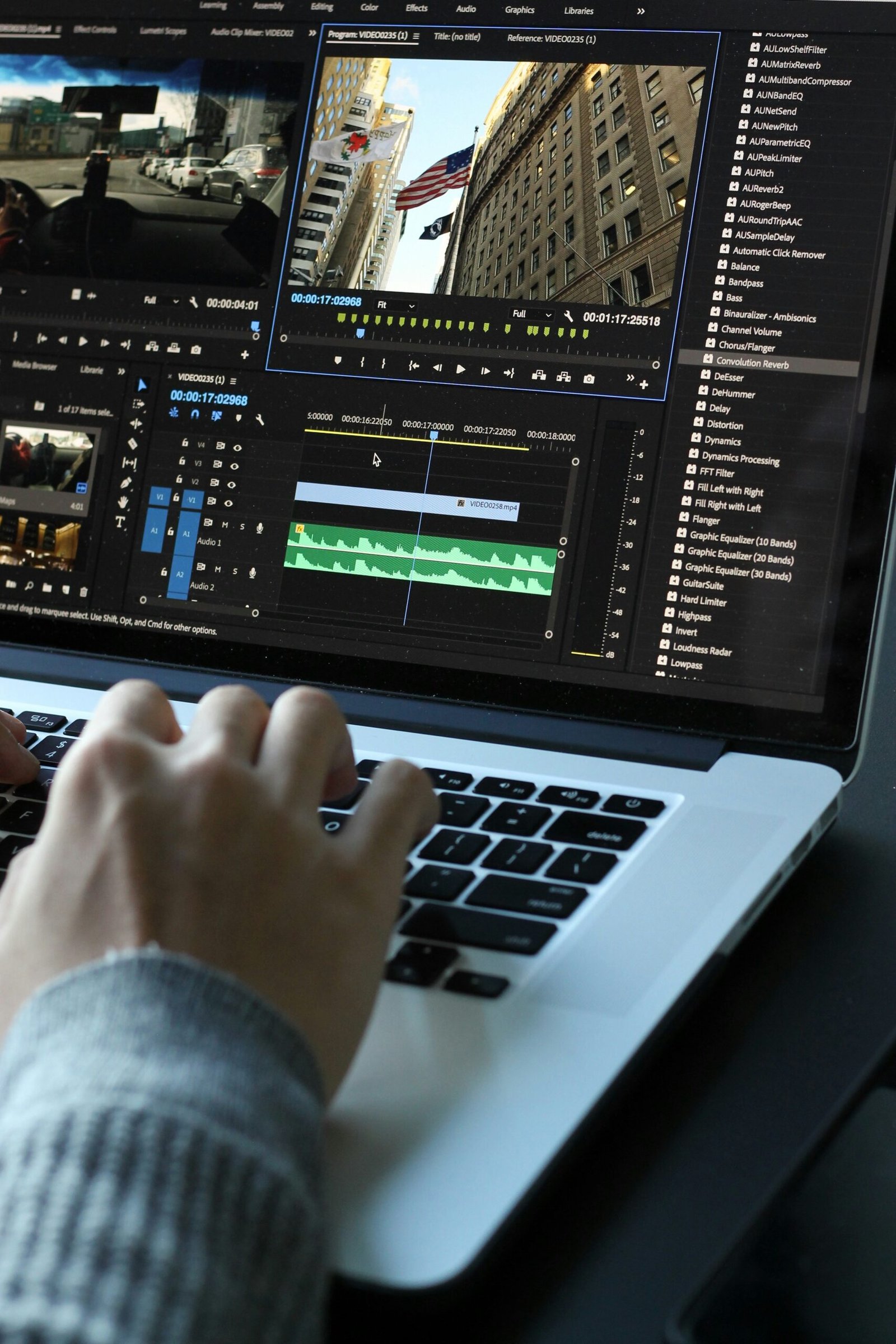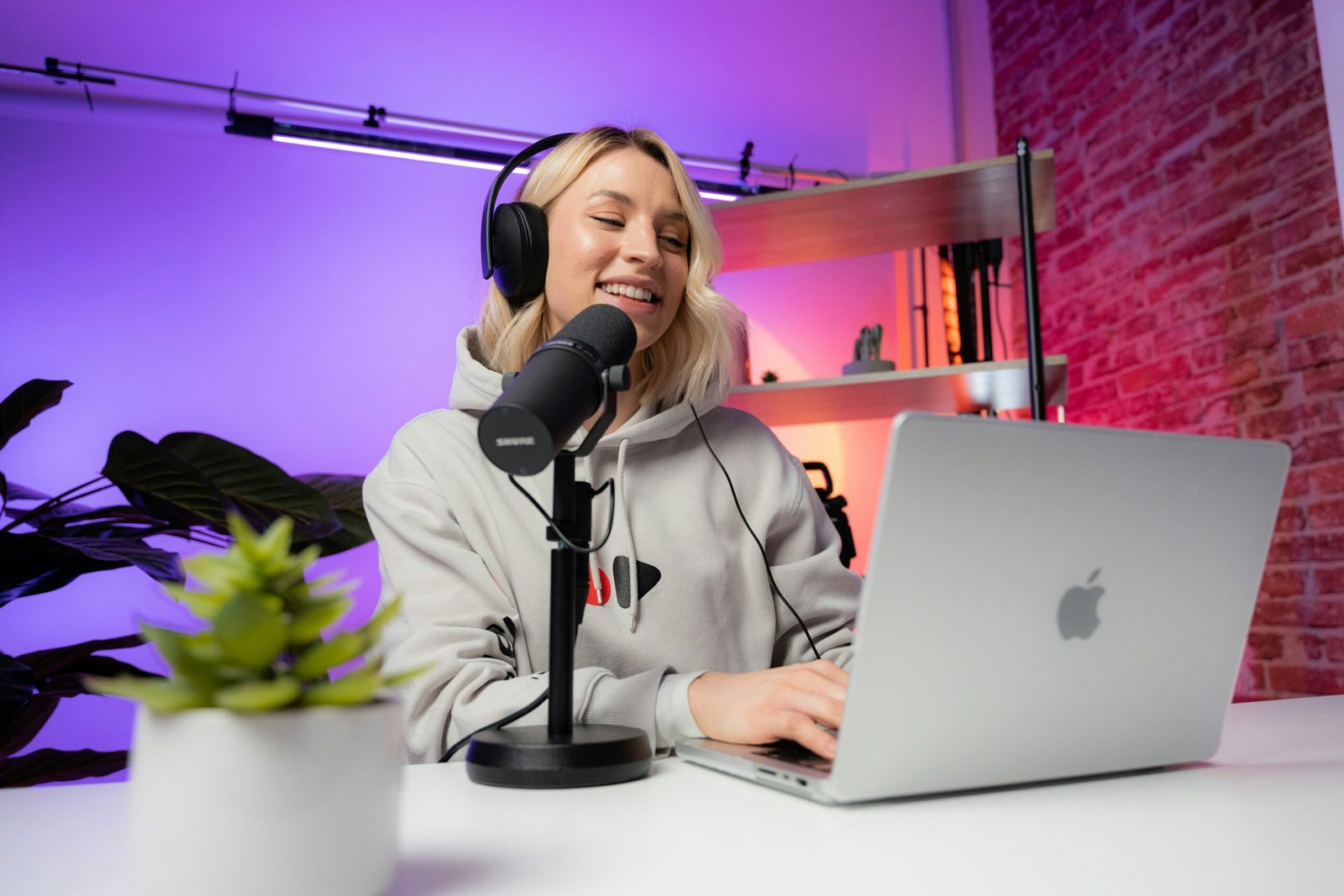Introduction to Video Quality on TikTok
TikTok has rapidly emerged as one of the most popular social media platforms, where high-quality video content plays a pivotal role in user engagement and visibility. In an environment where content is consumed in quick, bite-sized pieces, the quality of your videos can significantly impact how well they perform. High-quality videos are more likely to capture attention, encourage engagement through likes, shares, and comments, and ultimately lead to a broader reach.
Optimizing video quality on TikTok is not merely about ensuring that your footage is clear and well-lit; it encompasses both technical and creative aspects. From a technical standpoint, factors such as resolution, frame rate, and compression settings need to be meticulously managed to maintain the integrity of the video. Creatively, the content should be compelling, visually appealing, and relevant to your audience.
Understanding the importance of video quality is essential for anyone looking to succeed on TikTok. High-quality videos can distinguish your content from the vast sea of uploads, making it more likely to be featured on the For You Page (FYP), where it can gain exponential exposure. Furthermore, videos that are visually and audibly superior can build trust and credibility with your audience, fostering a stronger connection and encouraging long-term engagement.
As we delve deeper into the best practices for enhancing your TikTok videos, it is crucial to remember that both the technical and creative elements must be optimized harmoniously. This approach ensures that your content not only meets the platform’s technical standards but also resonates with viewers, driving meaningful interactions and expanding your digital footprint.
Understanding TikTok’s Video Specifications
To achieve optimal video quality on TikTok, content creators must first understand the platform’s specific video requirements and limitations. TikTok recommends that videos be uploaded in a resolution of 1080 x 1920 pixels, which corresponds to a Full HD vertical format. This resolution ensures that videos are clear and visually appealing on mobile devices, which is the primary medium for TikTok consumption.
The supported file formats for TikTok videos are MP4 and MOV. These formats are widely used and offer a good balance between video quality and file size. Using these formats ensures that your videos are compatible with the platform’s playback capabilities, thereby maintaining the integrity of your content.
Aspect ratio is another crucial factor in optimizing video quality on TikTok. The platform’s default aspect ratio is 9:16, which aligns with the vertical orientation of smartphones. Adhering to this aspect ratio maximizes screen real estate and provides a more immersive viewing experience for your audience. It is important to note that videos with different aspect ratios may be automatically cropped or resized, potentially compromising the quality and framing of your content.
When it comes to video length, TikTok allows a maximum duration of 60 seconds. However, shorter videos, typically ranging from 15 to 30 seconds, tend to perform better in terms of engagement and viewer retention. Understanding this limitation can help creators plan and structure their content more effectively, ensuring that key messages and visuals are delivered succinctly within the allotted time frame.
By adhering to these video specifications—resolution, file formats, aspect ratios, and maximum video length—creators can optimize their content for TikTok, ensuring it meets the platform’s technical standards and provides a high-quality viewing experience for their audience.
Utilizing Natural and Artificial Lighting
Lighting is a fundamental element in optimizing video quality, particularly on platforms like TikTok where visual appeal is paramount. Effective use of both natural and artificial lighting can significantly enhance the clarity and overall look of your videos.
Natural lighting is often considered the best option for video recording due to its broad spectrum and soft quality. To maximize natural light, aim to shoot your videos during the “golden hours,” which occur shortly after sunrise and just before sunset. During these times, the sunlight is softer and less harsh, reducing the likelihood of overexposure. Position yourself facing the window to ensure that the light evenly illuminates your face, minimizing shadows and enhancing video clarity.
However, relying solely on natural light can be limiting, especially for creators who need to shoot videos at various times of the day. This is where artificial lighting comes into play. Ring lights are a popular choice among TikTok creators due to their ability to provide consistent, even light. When using a ring light, place it directly in front of you or slightly above to avoid unflattering shadows. Adjust the brightness settings to match your environment and skin tone for optimal results.
It’s crucial to avoid common lighting mistakes that can degrade video quality. Overexposure can wash out colors and details, while underexposure can make the video appear grainy and dark. To prevent these issues, balance your light sources and use diffusers if necessary. Additionally, be mindful of the background lighting; ensure that it complements rather than competes with the primary light source.
Proper lighting not only enhances video clarity but also reduces noise, making your content more professional and engaging. By understanding and implementing these best practices for natural and artificial lighting, you can significantly improve the quality of your TikTok videos, thereby attracting a larger audience and boosting engagement.
Choosing the Right Camera and Settings
When it comes to optimizing video quality on TikTok, the choice of camera and its settings play a crucial role. Using a high-resolution camera can significantly enhance the clarity and detail of your videos. Modern smartphones often come equipped with advanced camera technologies, offering resolutions that rival dedicated video cameras. However, for the most professional results, dedicated video cameras with superior lenses and sensors provide unparalleled quality.
Adjusting the frame rate is another critical aspect of video production. A higher frame rate, such as 60 frames per second (fps), ensures smoother motion which is particularly beneficial for fast-paced content. Conversely, a lower frame rate like 24 fps can give your videos a more cinematic feel, which might be desirable for certain types of content. Understanding the nature of your video and choosing the appropriate frame rate is essential.
Manual focus and exposure settings allow for greater control over the final output. Auto settings may be convenient but can often result in inconsistent quality due to varying lighting conditions and movement. By manually adjusting focus, you can ensure that the subject remains sharp throughout the recording. Similarly, controlling exposure manually helps maintain consistent lighting, preventing issues such as overexposure or underexposure that can detract from the video’s quality.
The debate between using smartphone cameras versus dedicated video cameras often comes down to the balance between convenience and quality. Smartphones offer the advantage of portability and ease of use, with numerous apps available to enhance video recording. On the other hand, dedicated video cameras provide superior control and better overall quality, making them ideal for creators looking to produce professional-grade content.
By carefully selecting the right camera and optimizing the settings, you can significantly improve the quality of your TikTok videos. Whether you choose a high-end smartphone or a professional video camera, understanding and utilizing the optimal settings will ensure your content stands out in the crowded digital space.
Editing for Enhanced Quality
Editing is an indispensable component of the video production process, particularly when aiming to optimize video quality for platforms like TikTok. Effective editing can significantly enhance the visual appeal and overall impact of your content. Key elements in the editing process include color correction, stabilization, cropping, and the addition of effects.
Color correction is essential for achieving a professional look. Adjusting the brightness, contrast, and saturation can make your video more vibrant and engaging. Many editing tools come with preset filters that can be customized to suit your video’s aesthetic. Stabilization is another critical aspect, as shaky footage can detract from the viewer’s experience. Most editing software offers stabilization features that can smooth out your video, making it more visually pleasing.
Cropping is useful for focusing on the most important parts of your video. By trimming unnecessary elements, you can direct the viewer’s attention to the main subject. This is particularly important for TikTok, where vertical videos are the norm. Ensuring that your content fits well within the frame can make a significant difference in how it is perceived.
Adding effects can also enhance your video’s quality, but it’s crucial to use them sparingly. Overuse of effects can make your video look cluttered and distract from the main message. Subtle transitions, text overlays, and animations can add a professional touch without overwhelming the viewer.
Several user-friendly editing apps and software can help you achieve these enhancements. Adobe Premiere Pro and Final Cut Pro are popular among professional editors for their extensive features. For those looking for simpler options, apps like InShot, KineMaster, and CapCut offer intuitive interfaces and powerful tools that are perfect for quick edits on mobile devices.
By focusing on these key aspects of editing, you can significantly optimize video quality, making your TikTok content more engaging and visually appealing to your audience.
Optimizing Audio Quality
While visual elements often take center stage, optimizing audio quality is equally vital for creating compelling TikTok content. Clear audio can significantly enhance the viewer’s experience, making your videos more engaging and professional. To capture clear audio, consider using an external microphone. These devices can vastly improve sound quality compared to the built-in microphones on smartphones. Lavalier microphones, shotgun mics, and USB microphones are excellent options that cater to different recording needs and environments.
Reducing background noise is another critical aspect of optimizing audio quality. Background noise can be distracting and diminish the overall impact of your videos. To minimize unwanted sounds, record in a quiet environment whenever possible. Additionally, using noise-canceling microphones or post-production software to filter out background noise can make a substantial difference.
Syncing audio with video is essential for maintaining a professional look and feel. Poorly synced audio can be jarring and detract from your content’s quality. Most video editing software includes tools for precise audio synchronization, allowing you to match your voice or sound effects seamlessly with the visual elements.
Music and sound effects play a crucial role in enhancing the viewing experience. Carefully selected background music can set the tone and mood of your videos, while sound effects can add emphasis and engagement. TikTok offers a vast library of music and sound effects that you can use to elevate your content. However, it’s important to balance these elements to ensure they complement rather than overshadow the primary audio.
By focusing on these best practices for optimizing audio quality, you can create more polished and captivating videos that resonate with your audience. Ensuring high-quality audio not only bolsters the overall production value but also enhances the viewer’s connection to your content.
Leveraging TikTok Features and Tools
TikTok provides a rich array of in-app tools and features designed to help users optimize video quality and enhance overall engagement. Among these, filters and effects stand out as the most commonly used features. Filters can dramatically alter the appearance of your video by adjusting color balance and lighting, making it more visually appealing. Effects add an extra layer of creativity, enabling users to include augmented reality elements, text overlays, and animated graphics, which can make a video more engaging and memorable.
Another significant aspect of optimizing video quality on TikTok is the built-in editing tools. These tools allow users to trim, cut, and merge clips directly within the app, ensuring a seamless and professional finish. The app’s editing suite also includes options for adjusting playback speed, which can be used to create slow-motion or time-lapse effects, adding a dynamic flair to your content.
To effectively use these features, it’s crucial to understand their impact on video quality. For instance, using filters sparingly can enhance the natural look of your content, whereas overuse can lead to a less authentic appearance. Similarly, while effects can make a video more engaging, they should complement rather than overshadow the main content. Strategic use of these tools can significantly boost viewer retention and interaction, key metrics for success on the platform.
Moreover, TikTok’s “Enhance” feature, which automatically adjusts brightness, contrast, and exposure, can be a quick way to improve video quality without extensive manual editing. The “Beautify” tool allows for minor adjustments to facial features, which can be particularly useful for creators focusing on lifestyle or beauty content. By leveraging these TikTok features and tools effectively, users can significantly enhance video quality and, consequently, improve overall engagement and reach on the platform.
Testing and Analyzing Video Performance
Optimization is an ongoing process that requires constant testing and analyzing of video performance. To ensure that your TikTok videos are achieving the highest quality and engagement, it is crucial to experiment with different strategies and meticulously track the results. This approach allows you to fine-tune your content, thereby optimizing video quality for better viewer experience and engagement.
One of the most effective tools at your disposal is TikTok’s built-in analytics. These analytics provide a wealth of information, including metrics such as view counts, likes, shares, and comments. By examining these data points, you can assess how different aspects of your videos are resonating with your audience. For instance, analyzing the average watch time can give you insights into the optimal length for your videos.
To track how video quality impacts engagement and views, focus on specific metrics like retention rates and completion rates. High retention rates typically indicate that viewers find your video content compelling enough to watch it through to the end. On the other hand, a low retention rate might suggest that the video quality needs improvement, whether in terms of content, resolution, or editing style.
Once you have gathered enough data, it’s time to iterate and improve. Start by identifying patterns in high-performing videos. What do they have in common? Is it the lighting, the editing style, or the type of content? Use this information to refine your future videos. Additionally, don’t be afraid to A/B test different elements in your videos. For example, you could create two versions of a video—one with higher resolution and another with enhanced audio quality—to see which performs better.
Remember, the goal of optimizing video quality is not just to increase views but also to foster deeper engagement and interaction with your audience. Regularly updating your strategies based on performance data will help you stay ahead in the competitive TikTok landscape.



